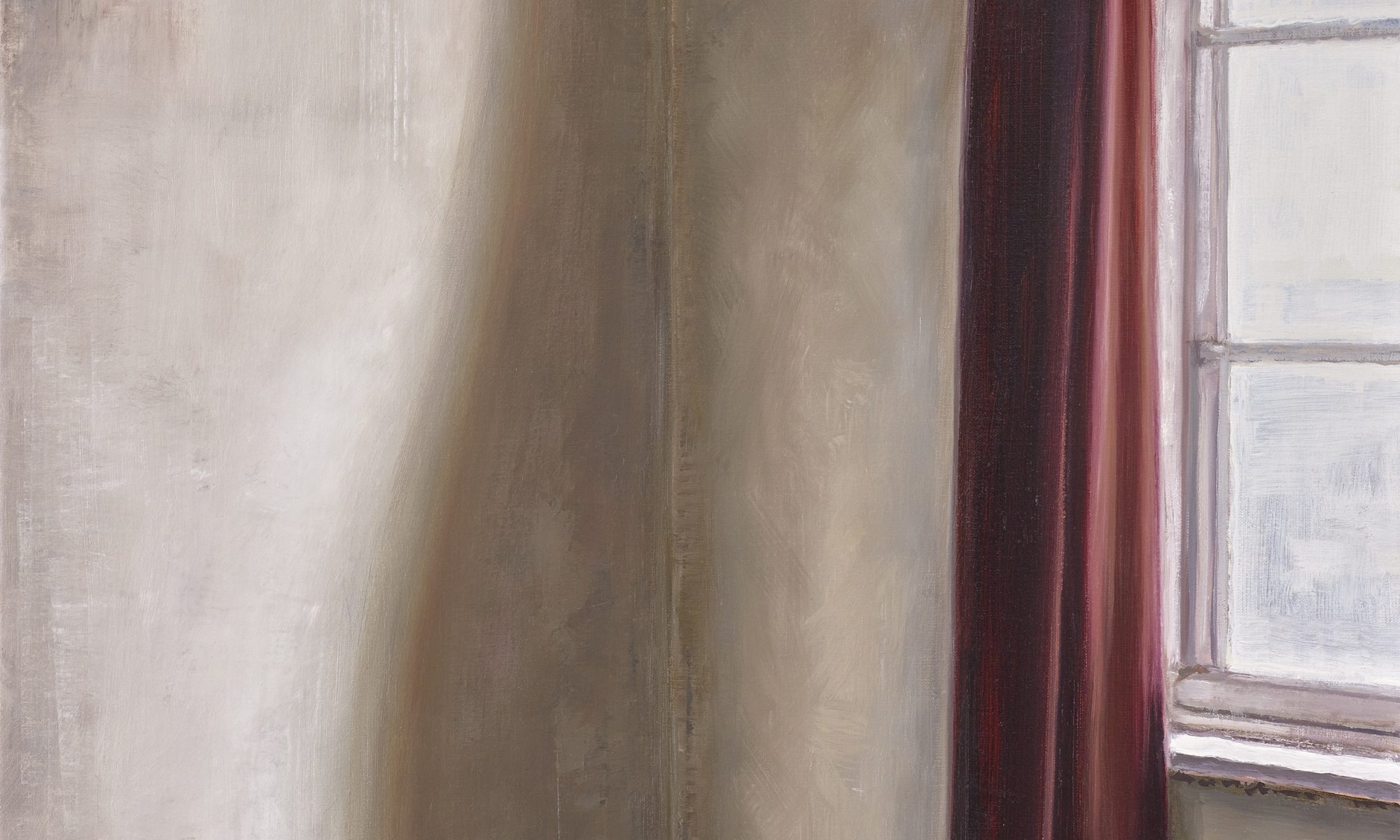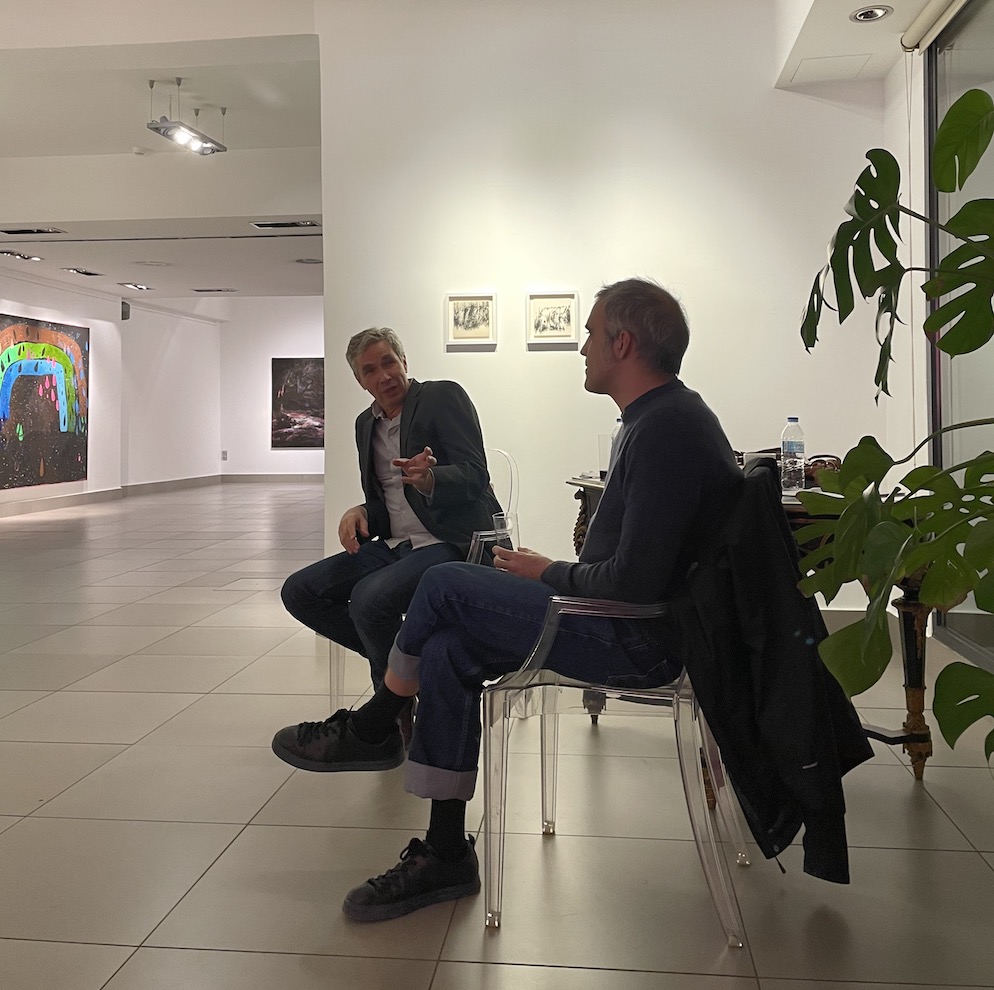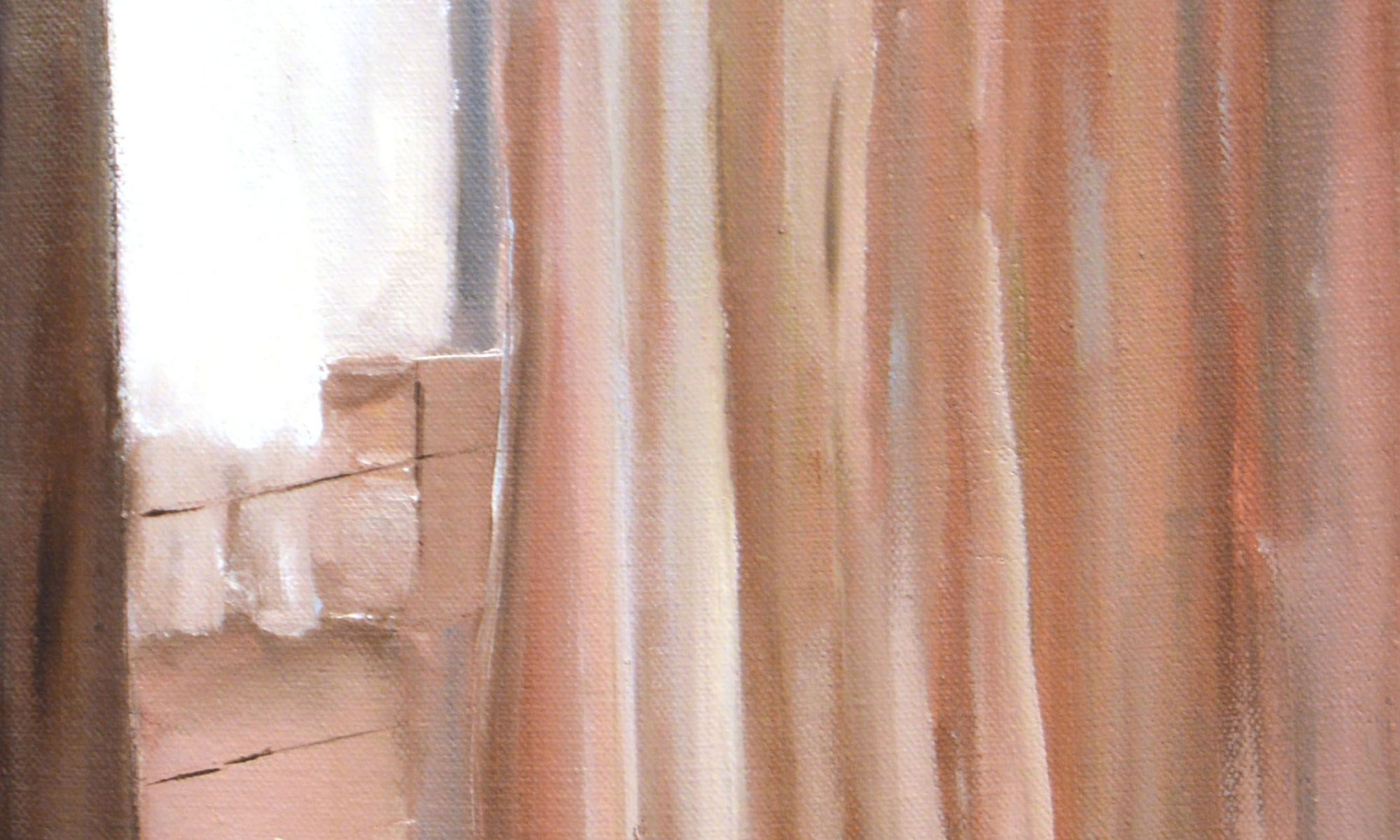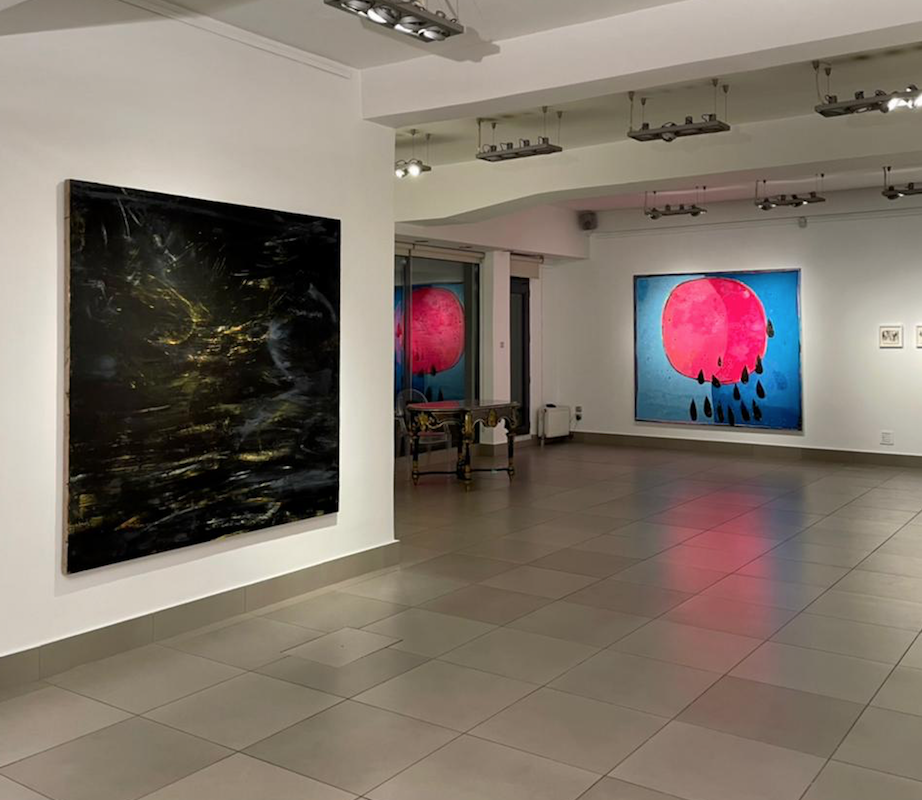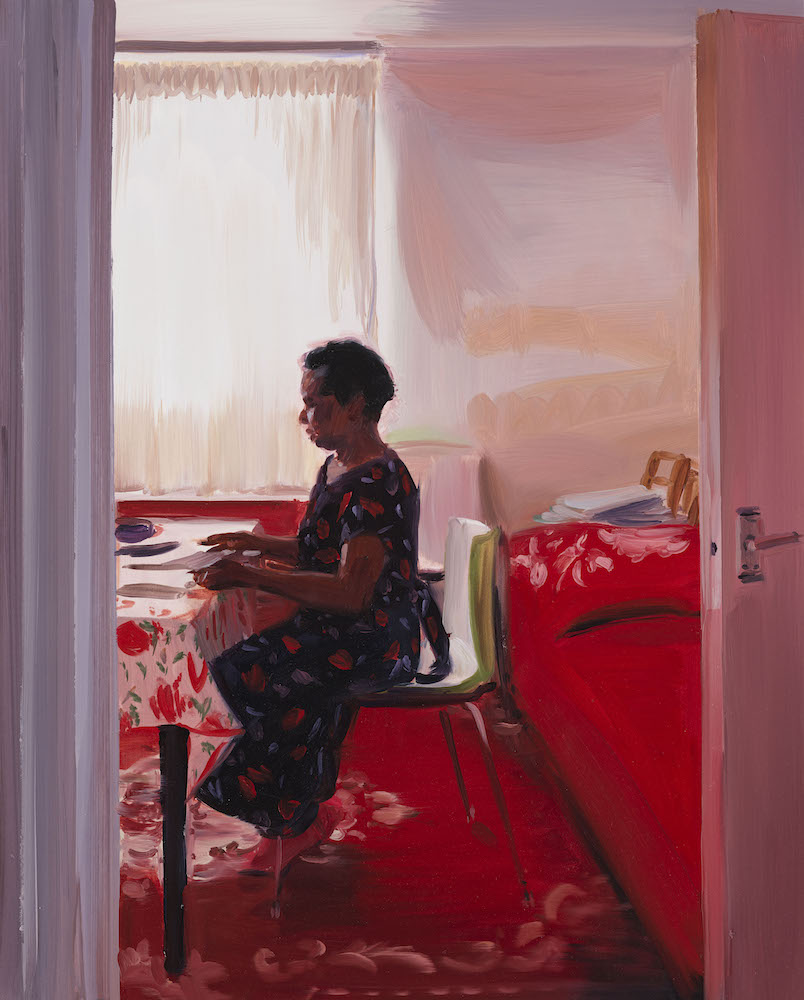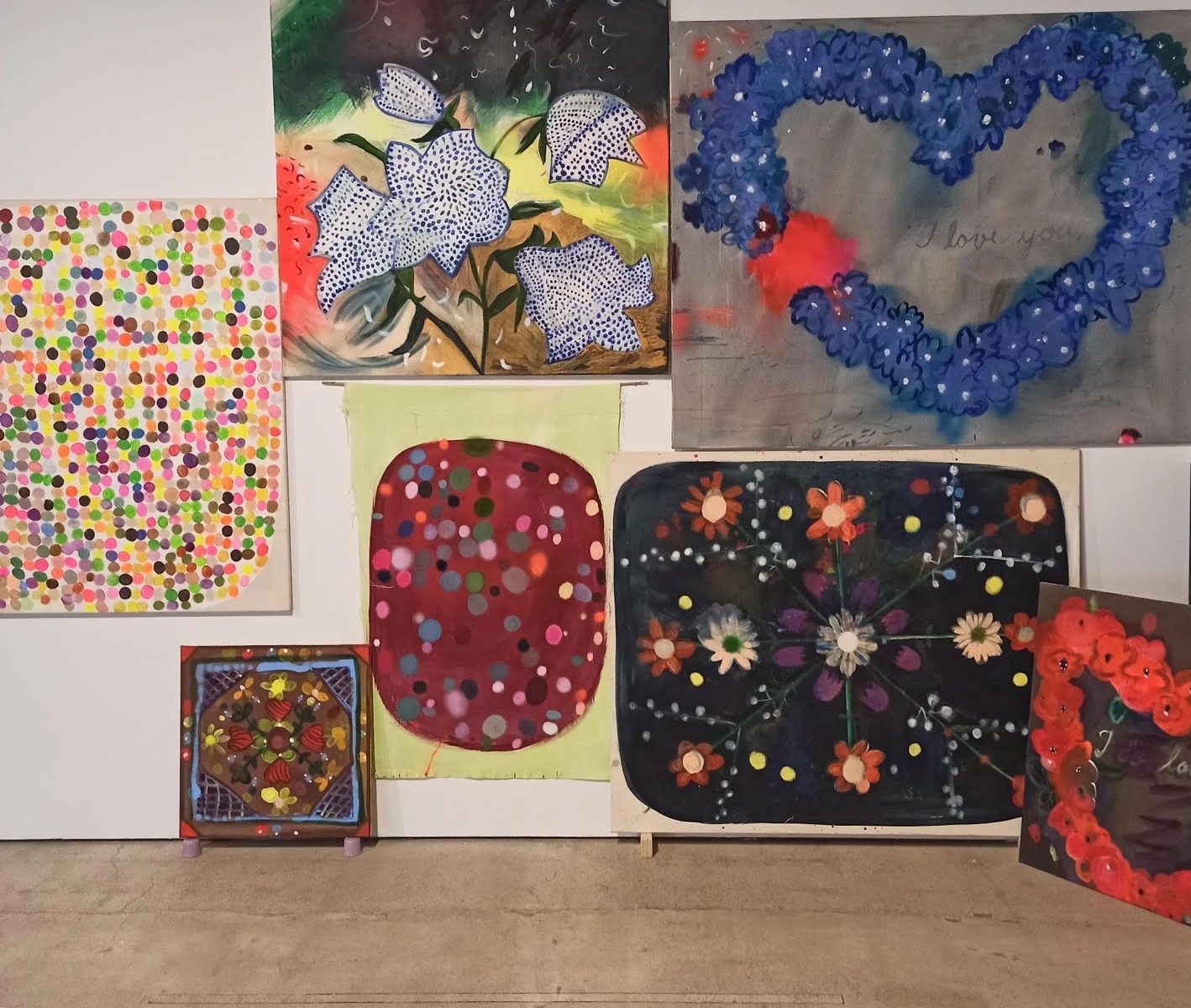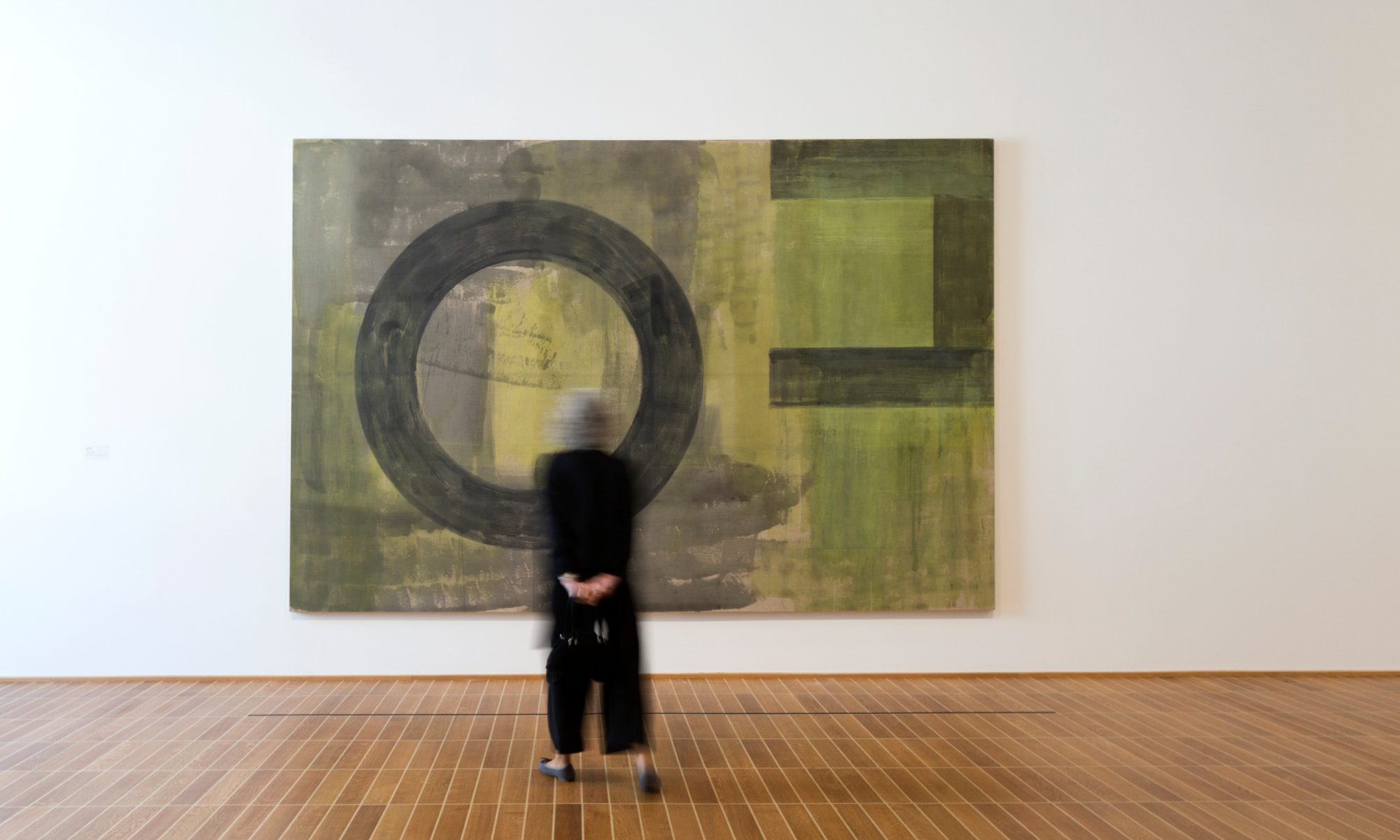On the occasion of Caitlin Lonegan’s exhibition in Vienna, at Galerie Nächst St Stephan, Rosemarie Schwarzwälder invited me to reflect on the work . In this video you see an introduction to the exhibition, in German with English subtitles.
Kunstenaarsgesprek Lara de Moor
Ze komt uit een familie van kunstenaars en schrijvers, maar ze is maar tot op zekere hoogte fan van het woord, als het om beeldende kunst gaat. Woorden kunnen als loopplank toegang tot een schilderij verschaffen, maar ze kunnen het schilderij ook inkapselen, vastzetten in betekenis, meent Lara De Moor. Woorden neigen dingen hard te maken, te doen stollen, terwijl het leven zelf vloeibaar is, zich in de tijd afspeelt, steeds verandert. Net als verf, die vloeibaar is als je haar opbrengt en pas stolt als de lagen over elkaar komen te liggen, de compositie vorm krijgt, het tafereel droogt.
Leegte schilderen is een paradoxale bezigheid. In het werk van Lara de Moor gaat het om wat in de lucht hangt in nagenoeg lege huizen, om de atmosfeer die in een kamer kan worden aangetroffen. Enerzijds wordt de toon gezet door sporen van de tijd, zoals een lichtplek op de muur die verraadt waar jarenlang een schilderij hing. Anderzijds is er de schilder die een stemming meebrengt en de lege ruimtes daarmee oplaadt en bepaalde aspecten accentueert. Of is het de bezoeker die het tafereel inkleurt? Wat objectief aanwezig is of in de lucht hangt, kan niet scherp worden gescheiden van wat er in de beschouwer sluimert.
Naar aanleiding van de verschijning van Waarom een schilderij werkt, ga ik op zaterdag zaterdag 10 December in gesprek met beeldend kunstenaar Lara de Moor. De fragmenten hierboven zijn uit het hoofdstuk over haar werk. Er zal tevens een presentatie van haar schilderijen in de galerie te zien zijn.
10 dec 2022, Galerie Roger Katwijk, Prinsengracht 737, Amsterdam, 16.30 u (inloop vanaf 16u). Vrij toegang. Graag even aanmelden vooraf: info@galerierogerkatwijk.nl
Exhibition ‘Three of a Kind’
The exhibition ‘Three of a Kind’ presents the work of three painters who share an interest in ambivalent forms of figuration: Milla Aska, Veronika Hilger, and Paula Zarina-Zemane. Their paintings depict situations or figures that cannot be identified in one, singular way but remain open to different readings. Yet in the choice of colors and the treatment of surface and paint, each of the artists develops a specific voice and unique character.
The figures in the work of Milla Aska (1993, based in Helsinki) appear to be behind a veil. They do not seem to be fully developed, but rather in the process of becoming visible and tangible. This impression is evoked through Aska’s approach to building up a painting with thin, translucent layers of paint. “My paintings seek shape around themes such as materiality and bodily sensations – for instance, how something feels against the skin, or what warmth feels like. I am intrigued by forms that seem to be something specific but don’t quite reveal themselves.”
The paintings of Veronika Hilger (1981, based in Munich) combine elements of landscape, still life, and portrait. Hilger is a specialist in ambiguous figuration. The shapes in her paintings have a familiar, often organic touch but are not specific enough to name. The artist presents them on an elementary level, stripped of details. As a result, the forms have a dynamic appearance: a foot could be a leaf, a leaf could be an animal, an animal could be a stone. “The organic is something that you can easily dock onto as a human, and that creates a kind of identification potential,” the artist noted.
In the works of Paula Zarina-Zemane (1988, based in Riga), the distinction between human and environment is blurred. The works oscillate between abstract compositions formed through clouds of color, and more concrete outlines of landscapes. The paintings are usually the result of a fast process, and they do evoke a sense of speed through the traces left by the brush. Yet the reduced composition also sets a reflective mood. “I am trying to get the result in one go,” the artist noted.
Three of a Kind opened on 30 June 2022 at KOGO Gallery in Tartu, Estonia and runs till 3 September 2022. The exhibition is curated by Jurriaan Benschop. It is part of the exhibition series Past is the Present at the Kogo Gallery in 2022.
Athens Talks on Painting
A program of talks about painting, the way it is made, the way we look at it, and the way we use language to address it. Curator Jurriaan Benschop speaks with experts from different fields about the exhibition ‘A Grammar of Gestures’ in Athens.
“Kourd Evening Art Talks” does not take the form a formal discussion, but it engages everyone is approaching the exhibition from another point of view and create a safe space for the lovers of art to gather and exchange ideas.
9.4.22 SHIFTING SHAPES with Andreas Ragnar Kassapis painter. A shared feature of the works in the exhibition A Grammar of Gestures is the dynamics of shapes, the tendency of forms to flip and change appearance while you are looking at them. The artists seem to focus on creating pictures that are not fixed in meaning, but remain open to different readings and ways of seeing.
10.4.22 PAINTING IN THE DIGITAL AGE with Alexandros Voutsas, photographer. Within the landscape of contemporary arts and life, how does painting contribute to the conversation? What specifics does it bring to the table? The stream of digital images and information, on our phones and other screens, has created a new context and changing habits of looking. How does painting relate to the current reality of digital image production and consumption?
11.4.22 CONTENT IS A GLIMPSE with Marita Gerarchaki, clinical psychologist. What kind of responses do we have when looking at a painting? Is there an immediate recognition of what it is about? Is it even possible to speak about ‘content’ in painting? The discussion starts with a quote from abstract expressionist painter Willem de Kooning from the 1960’s, who stated that “content is a glimpse, an encounter like a flash.”
14.4.22 PAINTING AS A TIME BASED ART with David Benforado, painter. What if we think of painting as a time based art? As an art that took many moments to be made, and many layers for its meaning to surface? An art that unfolds only when you give it a second look and a third and see how it changes? While paintings are usually presented as static objects on the wall, time plays an important role in its production and reception.
15.4.22 GLOBAL LANGUAGE, LOCAL ROOTS with Theodora Koumoundourou, art consultant. In the exhibition five painters with different backgrounds come together. They share a common language, which creates a dialogue between their respective positions. Yet their work is rooted in different cultural contexts. How does that come out?
All talks start at 7.30 pm at Kourd Gallery, Kassianis 2 in Athens. Entrance is free. The exhibition A Grammar of Gestures is on view till 18 March 2022. Image Jurriaan Benschop (l) in conversation with painter Andreas Ragnar Kassapis (r) on 9 april.
Young Americans in Thessaloniki
This exhibition presents the paintings of three American artists who focus on space in their work, Michelle Jezierski, Joseph Kameen and Adrienne Elyse Meyers. The interiors, landscapes, and other constellations they create are not just physical spaces, but also spaces of the mind that evoke memories and suspense, triggering perception and the imagination.
Geometric and organic shapes come together in the work of Michelle Jezierski. To find a compositional structure, she shifts and breaks observed spaces into vertical, horizontal, or diagonal bands, rearranging them to introduce an abstract rhythm into the image. Coming from a family of musicians, Jezierski likes to approach painting through aspects such as rhythm, harmony, or dissonance.
In the domestic interiors of Joseph Kameen, the everyday order of things seems disrupted. Objects have special powers, making us witness moments of alienation or wonder. A play of light and shadow leads the attention through the rooms. “The subjects of my paintings, both figures and objects, are in the process of coming to terms with their surroundings,” the artist explains.
In the works of Adrienne Elyse Meyers, empty interiors or fragments of rooms give opportunities for speculation about things that might have happened next door, or that are about to occur. The action itself is not depicted; it is just the stage that we see in the paintings. “I play into the image’s uncertainties,” the artist remarks. “What is in the next room, outside the window, or filling a silhouette is undisclosed (…)
Young Americans opens at Donopoulos IFA in Thessaloniki on December 17th, 2021 and will be on view till 27 February 2022. The exhibition is curated by Jurriaan Benschop. Image: Adrienne Elyse Meyers, Adjoining, 2020, oil on canvas 25 x 20 cm.
A Grammar of Gestures in Athens
‘A Grammar of Gestures’ is an international painting exhibition. Human figures, animals, or elements of landscape appear in the works on display, but these motifs present themselves neither in a singular, unambiguous way, nor as a hard subject matter. Rather, the center of attention is on the dynamics of shapes, on the ability of forms to flip and change appearance while you are looking at them. This shifting has to do with the way the motifs are executed, with the grammar of painterly gestures that is involved in the conception of the works.
For David Benforado (image left) the canvas is both a possibility to evoke a landscape as a surface that reflects an inner state of being, and a panel of thoughts. What appears to be a night landscape might change into an internal view when reading the title of the work ‘Ultrasound.’
Béatrice Dreux (image right) uses simple motifs like a moon, a cloud, or a rainbow, and from there, she develops the forms in a process of layering and detailed surface treatment until they gain an inner strength. For Dreux painting is a language in itself. When she paints, she is not aiming to tell a story, or make some statement about subject matter. Instead it is about texture, gesture, color, and form, and how these elements together on the canvas speak to us directly.
“A Grammar of Gestures” is on view till 18 March 2022 at Kourd Gallery in Athens. With Maria Capelo, Mark Lammert, Michael Markwick, Beatrice Dreux and David Benforado.
Caroline Walker in The Hague
The more than twenty paintings in “Windows,” London-based painter Caroline Walker’s first solo show at a museum, depict women engaged in various kinds of work: a maid in a hotel room, a hostess taking reservations in a restaurant, a hairdresser on the salon floor. Walker observes these figures through a window or doorway. Such framed views add a layer of estrangement and abstraction to her quotidian scenes, ensuring that we viewers never forget our voyeuristic perspective.
Walker is keyed to the social environments her figures inhabit, homing in on details such as lighting, decor, and body language. At the same time, she moves through different ways of mark-making, shifting gears between the clearly articulated and foggier parts of an interior, for example, or between sparkling accents such as a glistening glass with an orange drink on the table and bland patches like a blank wall.
These paintings do not contrive spectacular effects, but rather impress through their insistent focus on scenes of contemporary life that might otherwise go unnoticed. A swirling pattern of flowers on the window of a hair salon, for example, attracts our attention to what is happening inside. Through painting, the artist bestows attention on women, their occupations, and their more or less fortunate situation in society. This alone does not grant them agency; Walker’s work, often based on photographs taken in secret, is less concerned with producing empowering representations than it is with probing the act of spectatorship. She enacts the possibility of painting to accumulate layers of reflection, a haptic experience of life observed, leaving the sociological analysis to her viewers.
This text was first published as a Critics’ Pick on Artforum.com in November 2021
Elisabeth Frieberg in Stockholm
During my visit to Sweden, the artist showed me the works of her grandparents, Beth Zeeh and Ryno Frieberg, both painters whose works can be seen in their former house in the countryside. Driving there, a good hour outside of Stockholm, I watched the landscape change into gently curving meadows, farms, forests, and lakes. I became aware of the natural background of Frieberg’s works, the visual “material” the artist has seen so often, even if only subconsciously, as it was simply always there. You might wonder why she did not become a landscape painter, considering that she grew up as a country girl, playing at the lakeside, catching fish under the bridge, and seeing how animals were fed at the farm nearby. Or you could argue that she did become a landscape painter, but she did so in the age of abstraction, where the focus is not necessarily on what can be recognized as a depiction in a painting, but on what is present in terms of energy and ideas, colors and forms. Broadly speaking, and probably more correctly, we could call Frieberg a nature-based painter. Her paintings cannot really be separated from nature, just as they cannot be separated from the late 20th century in which she grew up. She went to art school in Umeå at a time when abstract and conceptual takes on art had become part of daily practice and conversation. Abstraction was neither a novelty nor the result of a reductive view on reality, but simply an existing vocabulary with its own expressive possibilities. At the same time, for Frieberg, every part of her “abstract” paintings is rooted in nature – in the color of the sky, the movement of water, the pattern of a bird’s feather.
(…)
From the essay: “Connecting to the Source,” published in the book Elisabeth Frieberg, Rhythm Nature Movement God, Kewenig Gallery, 2021.
Eeva-Leena Eklund
I wonder if Eeva-Leena Eklund orders her pizzas because of the taste, or because of the visual patterns they provide. Throughout the years she has painted quite some different types. In square and circular paintings, salami and paprika have transformed into abstract patterns, color dots and stripes. Basically this approach applies to other motifs as well. It starts with things from everyday life, like flowers, cats or fruit. Then the artist zooms in, looks for rhythm and color dynamics, and discovers a not yet familiar sight within the figuration.
At the EMMA (Espoo Museum of Modern Art) in Finland, Eeva-Leena Eklund made an installation in which she combines paintings with photographs. She mixies many works together, presenting them side by side, creating a visual explosion. One should not be fooled by the abundance of flowers and density of colors. Within the cheerful abundance, many contrasts can be found. The sweet comes with the sour, the soft with the sharp and the work is as comforting as it is provocative. The exhibition as a whole transmits a spirit of freedom, in how to look at life, how to be yourself, and how to make painting the art of the day that matters most.
The exhibition Eeva-Leena Eklund is up till 22 August 2021 at the EMMA (close to Helsinki), curated by Anna Tuori, and commissioned by the Saastamoinen Foundation.
We Need to Talk
In Covid times, some galleries are encouraging their audience to window shop. They put on the lights at night so that you can enjoy the exhibition. Does that work? I tried it one evening in Berlin – I went to see a painting behind the glass as I stood on the street. But what happened was that instead of being satisfied, my longing to move in closer and enjoy the real thing grew; I became aware of what I could not have. What can we do when art is not accessible and we are blocked from the regular format of gallery visits? Can we enjoy art in a different way?
Most lockdown policies imply that art is not essential or ‘system relevant.’ In the eyes of politicians, art is like the cherry on the cake. Nice and tasty, but you can do without it. Most people might even agree that it is more important to get vegetables, have soap, bread and milk, or even a bottle of wine, than to see art. But what if the situation lasts, which is the case in many countries? What happens when museums, galleries, and theatres stay closed for months? Life starts to become shallow, repetitive; people find themselves unmotivated or indifferent. It is taking too long. Art is not just a cherry, it is part of the fabric (or dough, if you wish) of culture: of reflecting the stressful times we live in, of phrasing ideals we share. Art, for instance, allows looking into people’s problems with a refreshing distance; it can offer a reflective space or a shift in perspective and the possibility to engage with the irrational and unconscious. It invites and reminds us to be more than just a functional, economic being that eats, sleeps and works.
Read the full text on Arterritory


